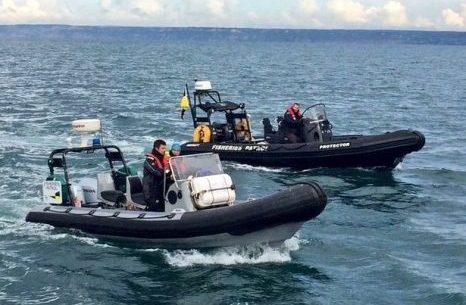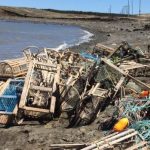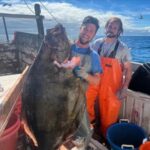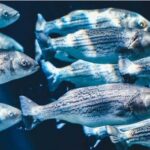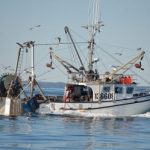Monthly Archives: November 2017

Gulf of Maine: What happens when a small Maine town and an offshore energy project collide
A project taking shape about 12 miles offshore from the village of Port Clyde is creating a rift in the tight-knit fishing communities on the St. George peninsula. On one side is Maine Aqua Ventus, a pilot project to test floating turbines as sources of renewable energy. On the other side are fishing families concerned that the turbines and cables used to transport the energy ashore could disrupt fishing habitats on which they rely.,,, “Our largest concern is what is going to happen after this,” said Randy Cushman, 55, a lifelong fisherman and resident of Port Clyde. “I’m worried about the next generation of fishermen, that’s what I’m worried about. I could really see them being eliminated by this. I really can.” click here to read the story 08:13
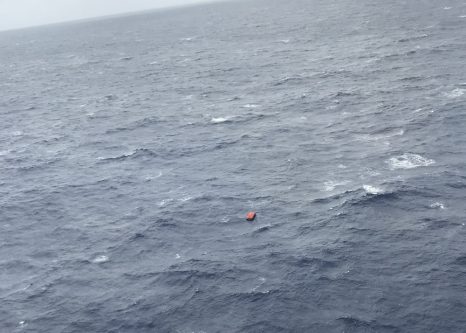
Photos and audio: Coast Guard, good Samaritans rescue 6 fishermen south of Hawaii
The Coast Guard, and good Samaritans rescued six fishermen from the 57-foot fishing vessel Jane, reportedly taking on water 110 miles southeast of the Big Island, Hawaii, Monday. The six fishermen were rescued by the crew of the 70-foot fishing vessel VAK 2 and are en route to Hawaii where they will be met by emergency medical services and U.S. Customs and Border Protection. At 7:22 a.m., watchstanders at the Sector Honolulu command center received a mayday call via satellite phone from one of the crewmembers aboard the Jane stating they were taking on water and in need of immediate assistance. click here to read the story 22:12
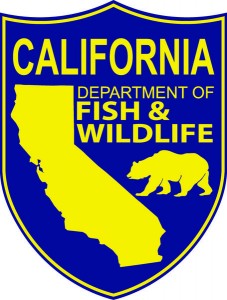
Commercial Dungeness Crab Season in Northern California Delayed Due to Crab Quality Testing
Due to poor crab meat quality test results conducted at the beginning of November, the Director of the California Department of Fish and Wildlife (CDFW) has issued a memo delaying the opening of the commercial Dungeness crab season in Fish and Game Districts 6, 7, 8 and 9 (Mendocino, Humboldt and Del Norte counties) for a minimum of 15 days until Dec. 16, under authority of Fish and Game Code section 8276.2. Crab quality tests ensure that crab are filled out enough prior to harvesting and follow the testing guidelines established by the Tri-State Dungeness Crab Committee that is overseen by the Pacific States Marine Fisheries Commission. click here to read the press release 21:15

Coast Guard medevacs 51-year-old man from fishing vessel 25 miles southeast of Murrells Inlet
The Coast Guard medevaced a 51-year-old man Monday from a fishing vessel 25 miles southeast of Murrells Inlet. Coast Guard Sector Charleston Command Center watchstanders received a call at 3:45 p.m. from the crew of the Shooting Star, a 42-foot fishing vessel, stating a crewmember was experiencing chest pains. A Coast Guard Air Facility Charleston MH-65 Dolphin helicopter crew launched at 4:28 p.m. and arrived on scene at 5 p.m. The Dolphin crew hoisted the man and transported him to Georgetown Memorial Hospital. -USCG- 19:12

FISH-NL says DFO has blood on its hands; department policy contributed to deaths of four Shea Heights fishermen in 2016
The Federation of Independent Sea Harvesters of Newfoundland and Labrador (FISH-NL) says a report by the Transportation Safety Board into the death of four fishermen off Cape Spear in September 2016 confirms the tragedy was the result of Department of Fisheries and Oceans policy. “I hope senior management at DFO go home this evening and take a good long look at themselves in the mirror, and then make sure to give their hands a good scrub because there’s blood on them,” says Jason Sullivan, Captain of FISH-NL’s under 40-foot fleet. “People are dying and no one’s held accountable.” click here to read the press release 14:04
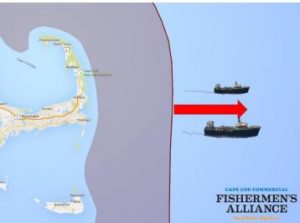
Cape and Islands Lawmakers Join Fight to Protect Offshore Herring
The Cape Cod Commercial Fishermen’s Alliance is receiving support from the Cape and Islands legislative delegation in protecting offshore herring for local fishermen. Earlier this month, the lawmakers called on the New England Fishery Management Council to create a buffer zone off the coast of the Cape and Islands from large-scale mid-water herring trawlers. Current regualtions allow the trawlers to fish three miles offshore from Provincetown past the Islands. click here to read the story 13:34

Florida Rep. Vern Buchanan (R) endorsed by radical environmentalist group
Florida Representative proudly posted on his Facebook page an endorsement by Ocean Champions. But who is Ocean Champions? Ocean Champions is a 501(c)(4) organization with a connected political action committee – the first national organization of its kind focused solely on oceans and ocean wildlife. Our goal is to create a political environment where protecting and restoring the oceans is a national government priority. By helping to elect pro-ocean Congressional candidates and engaging with Congress to pass pro-ocean laws and shoot down bills that would harm the ocean. What does Ocean Champions mean by having a goal to “create a political environment where protecting and restoring the oceans is a national government priority” and to “pass pro-ocean laws and shoot down bills that would harm the ocean?” click here to read the story 13:03
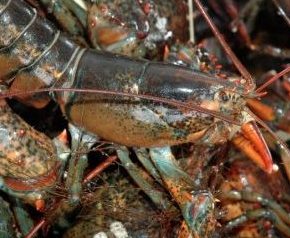
Dumping Day Delay: moved to Tuesday due to weather
Lobster fishermen in southwestern Nova Scotia will now be able to get their traps in the water on Tuesday after the start of the region’s season was delayed by a day to due weather. Dumping Day in lobster fishing areas (LFAs) 33 and 34 falls on the last Monday of November.,, David Whorley, the Department of Fisheries and Oceans director for the area, said he met with the advisory committee for the areas and Environment Canada on Sunday morning, and made the decision to issue a delay of at least one day. link 12:08
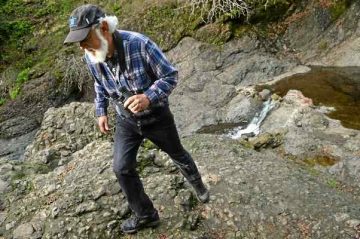
Lagunitas Creek gets odd visitor: pink salmon
A fish species rarely seen south of Washington state has turned up more than 700 miles away in Lagunitas Creek, part of what has been dubbed a strange beginning to the spawning season. In recent years attention on the Lagunitas Creek watershed has been focused on federally endangered coho salmon and threatened steelhead trout, with efforts made to restore habitat to help those fish. The fish come to the Marin watershed from the ocean each year to spawn. But this year the attention has been on two other species, which have made surprising appearances. click here to read the story 11:36
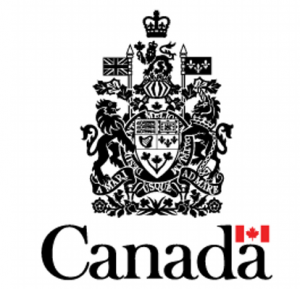
Transportation Safety Board of Canada – Operating in poor weather conditions led to the 2016 fatal sinking of fishing vessel Pop’s Pride
In its investigation report (M16A0327) released today, the Transportation Safety Board of Canada (TSB) found that adverse weather conditions led to the sinking of the small open fishing vessel Pop’s Pride and the loss of life of its four occupants in September 2016, off the coast of Newfoundland and Labrador. The report also highlights the continued need for focused and concerted action by all levels of government and industry members to fully address the safety risks and deficiencies that persist in Canada’s fishing industry. click here to read the press release 10:46

BP Canada applies to drill off N.S.
BP Canada has applied to drill up to seven exploration wells within its current offshore exploration licences, located between 230 and 370 kilometres southeast of Halifax between 2018 and 2022. The government is in the process of approving the drilling — on Wednesday, the Canadian Environmental Assessment Agency (CEAA) released a 215-page draft report, as well as a list of potential conditions BP Canada would have to abide by if it wants to conduct exploratory drilling in the area.,, But John Davis, director of the Clean Ocean Action Committee, which represents inshore fisheries in Nova Scotia, says the government and CEAA is not being forthcoming with crucial information. click here to read the story 08:36
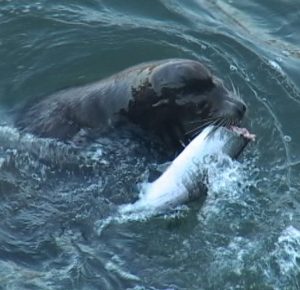
Oregon Eyes Killing Sea Lions to Save Steelhead Trout
Fish managers scrambling to gain approval to kill dozens of California sea lions feasting on threatened winter steelhead trout got a bump this week from a study blaming the creatures for taking food from orcas. But some say the effort is a misguided attempt to scapegoat natural predators for the human-caused decline of their prey. In 1999, about 15,000 winter steelhead passed Willamette Falls. In 2016, scientists with the Oregon Department of Fish and Wildlife counted just 512.,, “We’re looking at a threat of extinction posed by sea lions,” Shaun Clements, the agency’s senior fish policy advisor, told the Fish and Wildlife Commission at a meeting in September. click here to read the story 08:04

This Waikiki Shipwreck Is Proving Tough To Get Rid Of
On the morning of Oct. 13, commercial salvage crews overseen by the Coast Guard thought they might finally free the Pacific Paradise from the shallow waters off Waikiki, where the fishing vessel carrying 20 people had run aground three nights earlier. Things did not go according to plan. ,,, Now, salvage crews are poised to attempt yet another tow this week, hoping to move the wreck that has greeted beachgoers at Kaimana for nearly six weeks. click here to read the story 07:12

Empty nets and light wallets as fall shrimp season disappoints in South Carolina
The fall white shrimp season has been a painful one for South Carolina’s diminished fleet of trawlers, with many people wondering what’s become of all the tasty crustaceans. “They’re just not here,” said Grace Edwards, head of Shem Creek Fisheries, whose husband runs a trawler. “They are having a terrible season,” said Jimmy Bagwell, chairman of the Save Shem Creek Corp. “A lot of the boats have gone to Florida and Georgia to try to catch something.” In McClellanville, Mayor Rutledge B. Leland III runs Carolina Seafood, and he’s seen the same thing. “It’s really been a pretty sad fall, so far,” he said. Some shrimpers have headed up to North Carolina, where Leland said they are having a better season. click here to read the story 15:29
Help Shem Creek Fleet Pay The Bills – click here for the fundraiser
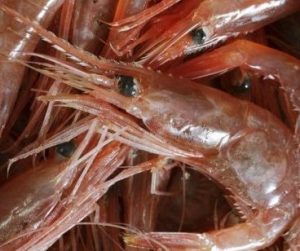
Northern Shrimp: Technical Committee recommends extending moratorium on fishing through 2018
In October, the agency that regulates shrimping in the Gulf of Maine, perhaps optimistically, approved measures that would limit northern shrimp allocations to individual states when and if the fishery ever reopens. The shrimp, or lack thereof, seem to be doing the best job of limiting those allocations. Next week, the Northern Shrimp Section, which regulates Gulf of Maine shrimping under the auspices of the Atlantic States Marine Fishery Commission, is expected to close northern shrimp fishing in the western Gulf of Maine for a fifth consecutive year. click here to read the story 14:12
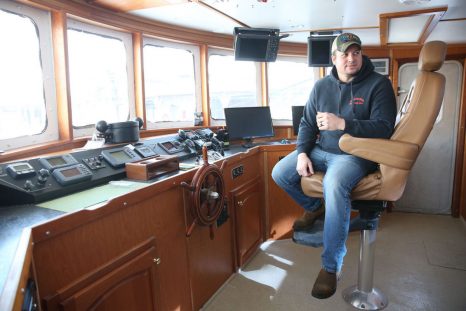
Southern Cape May County’s commercial fishing industry is worth $85 million
Southern Cape May County’s commercial fishing industry is worth $85 million, according to a recently released federal report. The combined port of Cape May and Wildwood is the ninth largest commercial fishing port in the United States and the second biggest on the East Coast, measured by dollar value. In a county known as a tourism hub, commercial fishing — and especially the scallop trade — is a big part of the area’s economy, those in the industry say.,,Fishermen need to buy fuel and groceries for every trip and hire welders and electricians to repair their boats, which creates additional jobs, Laudeman said. click here to read the story 10:22

On This Day: November 26 – 1898: Killer gale sinks SS Portland, 100 die
The recorded maritime history of the East Coast details many storms with high incidences of vessels and people lost. Killer gales were recorded in 1839, 1851, 1873 and 1886. But none was to compare with the great hurricane of November 26 to 28, 1898. This storm is commonly referred to as the Portland Gale, after the steamer Portland, which was lost at sea with all hands.,, The storm wrecked more ships than any other in the history of New England. It is estimated that over 150 vessels were lost, both in the harbors and at sea. Many were never heard from after sailing. click here to read the story 09:43
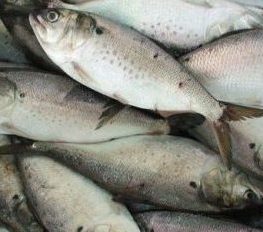
Opinion: Menhaden decision sticks to science-based fisheries management
This month, the Atlantic States Marine Fisheries Commission updated its menhaden management plan, taking into account the increasing menhaden stock. The commission was heavily lobbied by the fishing industry and by a coalition of environmentalists and sport-fishing interests led by a unit of the Pew Charitable Trusts. The Menhaden Fisheries Coalition wanted to increase its allowable catch by about 40 percent, to 280,000 metric tons per season. The environmental coalition wanted to leave more fish in the ocean, which the MFC figured would cut the industry’s catch by about a quarter, to 147,000 tons. click here to read the story 08:12
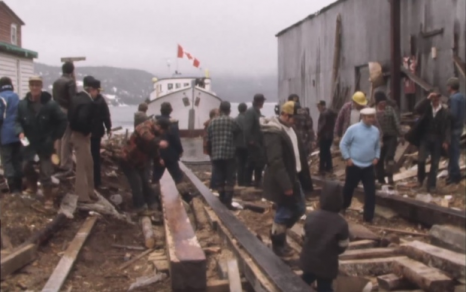
Land & Sea: Wooden vs. Steel Longliners – Take a trip back in time with an archival episode from 1980
This 1980 episode of Land & Sea opens with the scene of a champagne bottle exploding on the bow of a new longliner. The show explores the tension surrounding wooden and steel-hulled longliners at a time when boatbuilding design was evolving to match new fishing technology. Owner Charles Hussey of Port de Grave isn’t bothered by the $500,000 price tag for his new, wooden, 17-metre vessel, the Eastern Harvester, built in Arthur Petten’s boat yard in South River.,,, The Land & Sea crew went south in this episode to Bayou la Batre, the headquarters for steel-hulled boat building. Video, click here to read the story 20:31

Nez Perce tribe hopes to spark return of chinook with artificial beds
The Nez Perce tribe is taking advantage of overproduction at the Clearwater Hatchery to seed some local streams with spring chinook redds – spawning beds or nests. Members of the tribe’s fisheries division have been busy placing 850,000 fertilized eggs into artificial nests in the beds of Newsome and Lolo creeks, where they have also done extensive restoration work. The process involves using special equipment to recreate the nests that female salmon laboriously create with their bodies and then injecting the eggs into the gravely cavities. It’s not the most efficient way to boost salmon runs, but tribal fisheries officials say it’s better than having the excess eggs go to waste. click here to read the story 16:41

Death by Killer Algae
They didn’t think much of the first dead whale. Dwarfed by the rugged cliffs of Patagonia’s high green fjords, the team of biologists had sailed into a gulf off the Pacific Ocean searching for the ocean’s smaller animals, the marine invertebrates they were there to inventory. That night, while hunting for an anchorage in a narrow bay, the team spotted a large, dead whale floating on the water’s surface. But for the biologists, death—even of such an enormous animal—didn’t seem so unusual. Not so unusual, that is, until they found the second whale, lying on the beach. And a third. And a fourth. In all, they found seven in that bay alone. Over the next day, they counted a total of 25 dead whales in the fjord. click here to read the story 15:42

DUMPING DAY DELAYED: Forecasted winds cancel Nov. 27 start of lobster season
The opening of the lobster fishery off southwestern Nova Scotia has been delayed due to the forecasted high winds. The season, which was to have started on Monday, Nov. 27, with dumping day, will only start Tuesday at the earliest. A decision to postpone the start of the LFA 34 (southwestern Nova Scotia) and LFA 33 (south shore of NS) seasons was made during Saturday morning conference calls to review the forecasted weather. Anything forecasted winds above 25 knots automatically cancels the start of the season. Sometimes the opening of lobster fishing off southwestern Nova Scotia goes off without a hitch. And sometimes not. Here’s a look at some past season openings over the years. click here to read the story 11:39
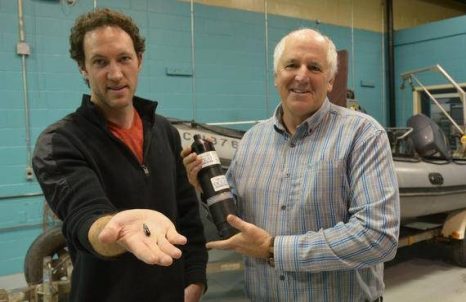
Ecologist disputes Donkin Mine ocean test fears
The longer Kameron Coal gives in to public pressure and delays its controversial plan to conduct sub-ocean floor surveying near the Donkin Mine, the longer Cape Bretoners will have to wait to find work there, says a Nova Scotia marine ecologist. “The reason they laid off 49 people this month is that they’re not going to be mining any more coal until they sort this out,” said Bruce Hatcher, chairman of Marine Ecosystem Research at Cape Breton University.,, Hatcher claims both Fisheries and Oceans and the company have been misleading fishermen into believing the proposed two-week project will include conventional seismic testing, which comparatively poses much more of a threat to ocean ecosystems. click here to read the story 09:20
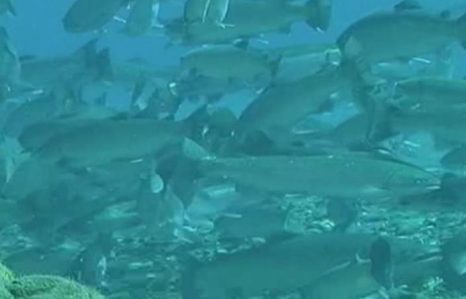
Bumper sockeye salmon run forecast for Bristol Bay in 2018
The Alaska Department of Fish and Game is forecasting another bumper year for sockeye salmon in 2018. An expected 51 million sockeye could return, with 37 million set aside for commercial fishing. “All systems are expected to meet their spawning escapement goals,” wrote the ADF&G in a news release. The bumper forecast comes amidst debate about whether to open the controversial Pebble Mine, a move that supporters say would bring growth and economic activity to the region. Detractors say the mine would harm the profitable watershed. click here to read the story 08:39
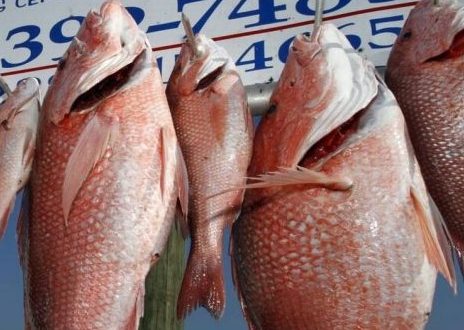
How many red snapper are actually in the Gulf? These scientists are going to find out
A team of 21 scientists from universities and state and federal agencies will attempt to answer one of the Gulf’s perplexing questions: How many red snapper are there? “American communities across the Gulf of Mexico depend on their access to, as well as the longterm sustainability of, red snapper,” said Secretary of Commerce Wilbur Ross in a press release announcing the formation of the team. “I look forward to the insights this project will provide as we study and manage this valuable resource.” The panel convened by the Mississippi-Alabama Sea Grant Consortium was awarded $9.5 million in federal funds for the project through a competitive research grant process and will receive another $2.5 million from the universities. click here to read the story 22:53
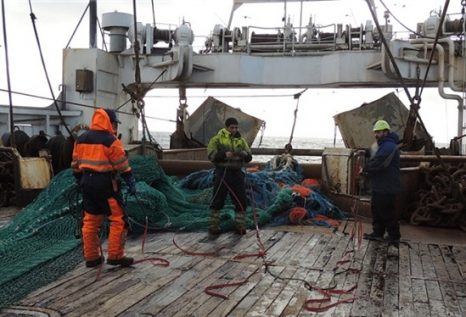
A close encounter with an albatross
Nahuel Chavez is a seabird biologist who has worked as an Albatross Task Force (ATF) Instructor in Argentina for eight years. He has been passionate about saving albatross since his first trip on a longline-fishing vessel when he saw huge numbers of them being killed, and knew he had to do something to stop it. Nahuel writes to us from a trawler off the coast of Argentina where he is on a 55-day trip to monitor the impact on seabirds. photo’s, click here to read the story 20:46
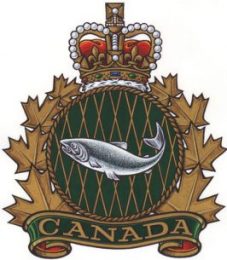
Inshore harvesters voice concerns at DFO outreach meeting in Marystown
The Department of Fisheries and Oceans (DFO) was in Marystown Nov. 21 for one of their series of outreach sessions for inshore fish harvesters in the province. The meeting gave fishers a chance to voice some of their concerns on issues affecting the fishery, and offer their ideas for solutions on some of those issues. Cod allocation was a hot topic among harvesters who gathered at the Marystown Hotel and Convention Centre. click here to read the story 19:19

Net-mounted LED lights help reduce bycatch in Pacific hake fishery
LED lights can help reduce bycatch by aiding the escape of Chinook salmon from Pacific hake trawl nets, according to a study done by researchers at the Pacific States Marine Fisheries Commission and the Northwest Fisheries Science Center. The lights influence where salmon exit bycatch-reducing windows in the hake nets, and could increase the total number of salmon that escape, the researchers say. In a series of tests in 2015, the lights seemed to attract the Chinook salmon. During the tests, 86 percent of the salmon that escaped used the openings framed by LED lights. click here to read the story 15:48
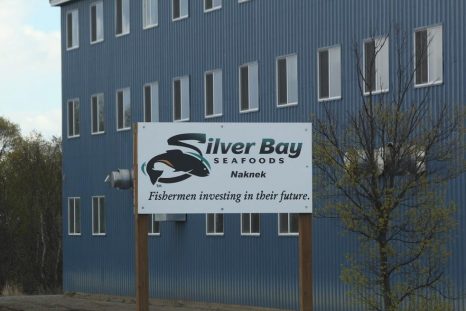
Silver Bay Seafoods making bold moves for 2018 rebound
The record-setting 2017 commercial sockeye season in Bristol Bay was tougher than usual for most companies in Bristol Bay. The run size, 56.5 million total, was a whopping 42 percent bigger than the state predicted, and the 37.7 million sockeye landed was 10 million more than anyone was planning for. Nearly every company “plugged” up and put their fleet on limits while they struggled to keep up. Added to that list in 2017 was Silver Bay Seafoods, whose processing plant in Naknek fell behind the massive harvest its highliner fleet was bringing in. This was never supposed to happen. click here to read the story 14:48






